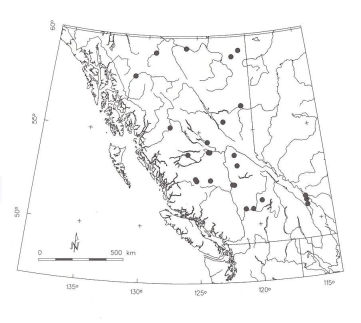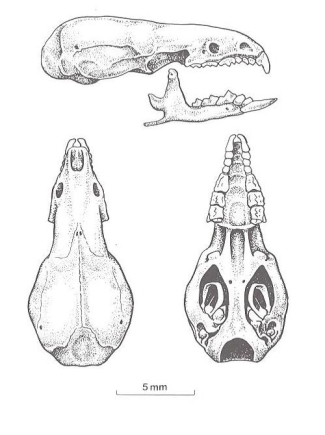View Desktop Page
Sorex hoyi Baird
Pygmy Shrew
Family: Soricidae
Pygmy Shrew
Family: Soricidae
Species account author: David Nagorsen
Extracted from the Opossums, Shrews and Moles of British Columbia
Extracted from the Opossums, Shrews and Moles of British Columbia
Map click to expand contents

Distribution of Sorex hoyi in British Columbia.
(Click on the map to view a larger version.)
Source: Opossums, Shrews and Moles of British Columbia by David Nagorsen © Royal BC Museum
Illustration click to expand contents
Click on the image(s) below to view an expanded illustration for this taxon.


Illustration Source: : Opossums, Shrews and Moles of British Columbia by David Nagorsen © Royal BC Museum
Species Information click to expand contents
The Pygmy Shrew is the smallest shrew and smallest mammal in British Columbia. Its dorsal fur is dull greyish brown; its underside is light grey or brown. The winter pelage is more grey than brown and appears slightly tricoloured. The tail is weakly bicoloured and is relatively short, usually less than 40 per cent of the total length.
The skull is small and has darkly pigmented teeth. The upper incisor has a large, long medial tine in the pigmented area on the face of the incisor. The upper toothrow appears crowded. There are five upper unicuspids, but the small disc-like third unicuspid and the tiny fifth unicuspid are not readily visible in side view.
IdentificationThe only British Columbian species that could be confused with the Pygmy Shrew is the Common Shrew (Sorex cinereus). In external features, the Pygmy Shrew can be identified by its relatively shorter tail (less than 40 per cent of the total length) and grey pelage. The presence of only three conspicuous upper unicuspid teeth when the skull is viewed laterally is a diagnostic trait that distinguishes the Pygmy Shrew from all other British Columbian shrews.
Dental Formulaincisors: 1/1
unicuspids: 5/1
premolars: 1/1
molars: 3/3
Measurementstotal length: 85 (62-100) n = 51
tail vertebrae: 29 (22-34) n = 50
hind foot: 9 (6-12) n = 51
ear: 6 (5-7) n = 28
weight: 3.3 (2.1-5.0) n = 28
Biology click to expand contents
|
Habitat click to expand contents
|
Distribution click to expand contents
|
Taxonomy click to expand contents
|
Remarks click to expand contents
|
Status Information click to expand contents
|
BC Ministry of Environment: BC Species and Ecosystems Explorer--the authoritative source for conservation information in British Columbia. |